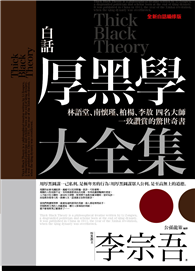One of many natural sign languages in use around the world, British Sign Language (BSL) operates as a fully-fledged semiotic system in the visual-spatial modality, through the simultaneous use of embodied articulators. Filling a gap in current research, this book investigates visual-spatial communications from a functional perspective.
Presenting a description and analysis of BSL from the perspective of Hallidayan Systemic Functional Linguistics, Luke A. Rudge explores how BSL users make meaning from three different yet interrelated perspectives:
- How exchanges of information are managed at a social level (the interpersonal metafunction)
- How experience is encoded in the language (the experiential metafunction)
- How communications are organised into coherent parts and wholes (the textual metafunction)
Examining these perspectives both separately and together, Exploring British Sign Language via Systemic Functional Linguistics places them within the context of current observations in sign linguistics, providing a complementary viewpoint on how visual-spatial communications may be understood as social semiosis
| FindBook |
有 1 項符合
Exploring British Sign Language Via Systemic Functional Linguistics: A Metafunctional Approach的圖書 |
 |
Exploring British Sign Language Via Systemic Functional Linguistics: A Metafunctional Approach 作者:Rudge 出版社:Bloomsbury Academic 出版日期:2022-10-06 語言:英文 規格:精裝 / 224頁 / 普通級/ 初版 |
| 圖書館借閱 |
| 國家圖書館 | 全國圖書書目資訊網 | 國立公共資訊圖書館 | 電子書服務平台 | MetaCat 跨館整合查詢 |
| 臺北市立圖書館 | 新北市立圖書館 | 基隆市公共圖書館 | 桃園市立圖書館 | 新竹縣公共圖書館 |
| 苗栗縣立圖書館 | 臺中市立圖書館 | 彰化縣公共圖書館 | 南投縣文化局 | 雲林縣公共圖書館 |
| 嘉義縣圖書館 | 臺南市立圖書館 | 高雄市立圖書館 | 屏東縣公共圖書館 | 宜蘭縣公共圖書館 |
| 花蓮縣文化局 | 臺東縣文化處 |
|
|
圖書介紹 - 資料來源:博客來 評分:
圖書名稱:Exploring British Sign Language Via Systemic Functional Linguistics: A Metafunctional Approach
內容簡介
|











